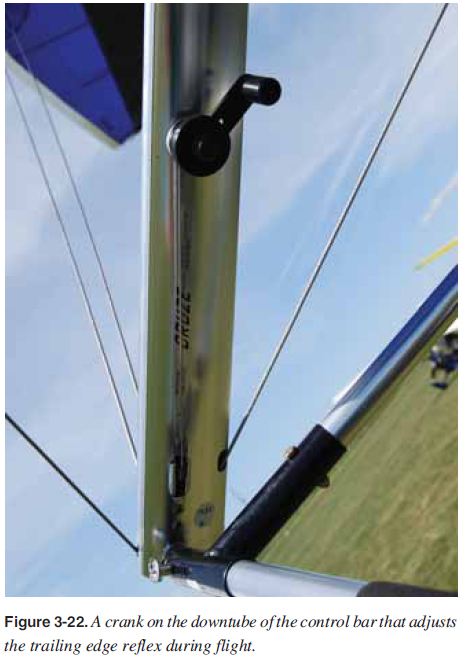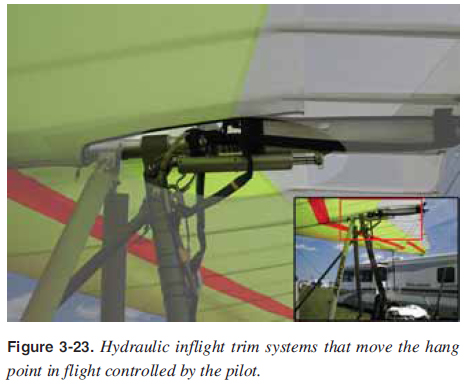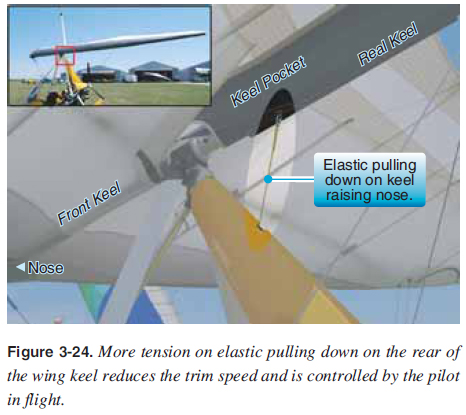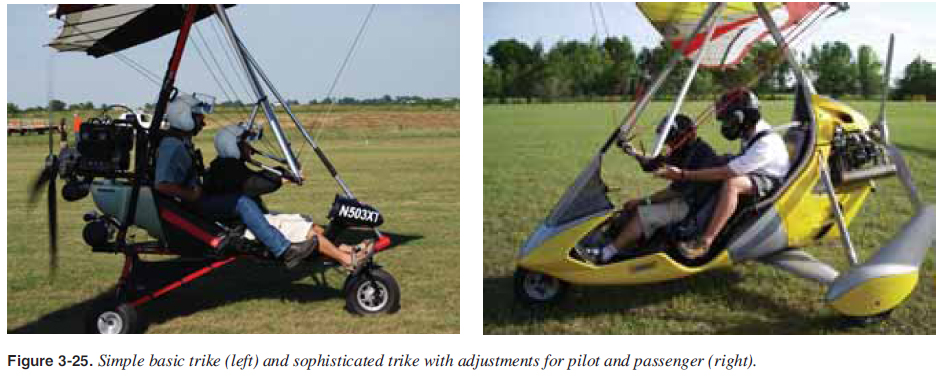
 |
|
||
| CHAPTER 3. Components and Systems
Infl ight Adjustable Trim Systems Being able to adjust the trim systems in fl ight has a number of advantages as discussed later in the fl ight sections. A number of infl ight adjustable systems are available with different manufacturers. A common in-fl ight adjustable trim system is raising and lowering the trailing edge. Raising the trailing edge increases airfoil refl ex and slows the wing. Lowering the trailing edge decreases airfoil refl ex and speeds up the wing. Typically, a crank on a downtube controls a wire that runs up the downtube to the top of the wing. As a result of moving the crank, the trailing edge wires are raised and lowered and the trim speed changed. [Figure 3-22] Hydraulic or electrical systems can move the hang point on the wing for other infl ight trim systems. [Figure 3-23]   Another pilot-actuated trim system in fl ight is an elastic system in which the pilot increases tension on the elastic system which raises the nose for climb and slower fl ight. [Figure 3-24]  Carriage The carriage is a completely separate structure from the wing. Without the wing, the carriage can be driven around if needed. Most of the weight and cost of the WSC aircraft is in the carriage. There is a wide range of carriage designs from the most simple and basic open trikes to the more sophisticated and complex trikes that integrate cowlings and offer a number of adjustments for the pilot and passenger, resulting in comfort and less fatigue during fl ying. Generally, the more complex the trike, the more it costs, weighs, and the more power it requires for similar wings. [Figure 3-25]  |
| ŠAvStop Online Magazine Contact Us Return To Books |